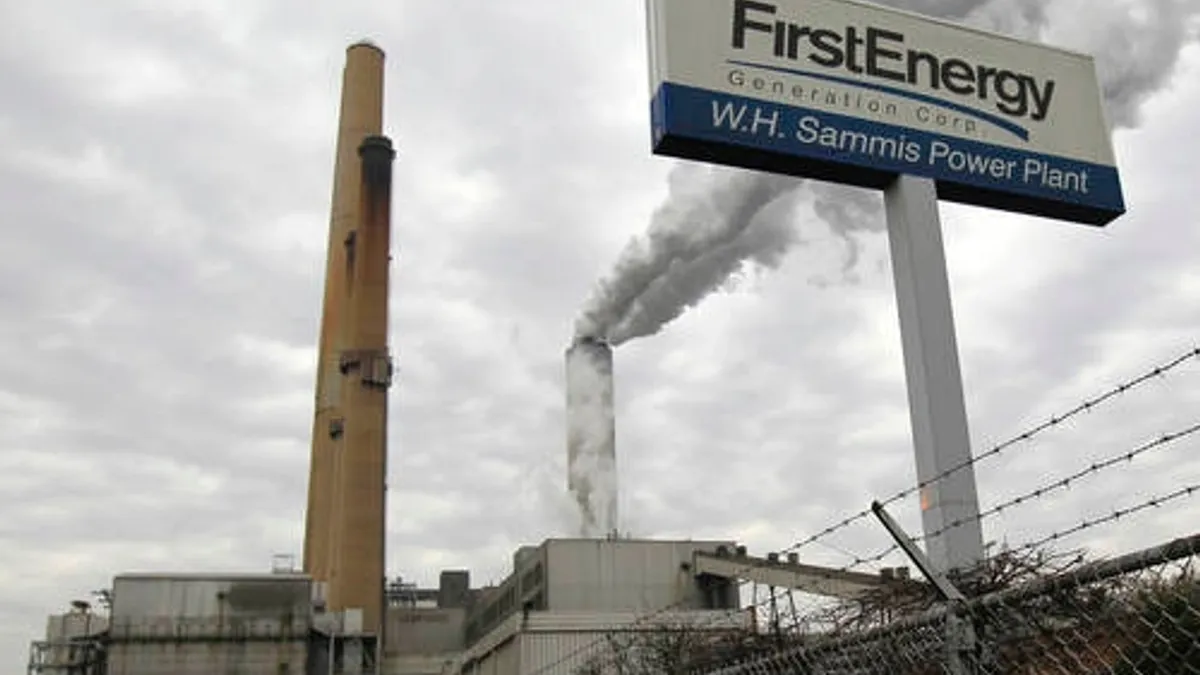Dive Brief:
- Ohio regulators this summer will consider a slate of proposals – “bailouts,” as opponents are calling them – which would allow FirstEnergy to continue operating a handful of generation facilities it says are struggling to remain profitable, but essential for reliability.
- The generator has asked ratepayers to subsidize operations at three coal facilities and a nuclear plant, according to Midwest Energy News, and has resisted calls for the full contents of power purchase agreements to be made public.
- The company has been adding new provisions to the case since late last year and in return more than a dozen parties have agreed to not oppose the power arrangements. Consumer advocates say the provisions amount to "special deals" for certain groups and worry residential customers will wind up footing the bill for industrial power users.
Dive Insight:
In advance of the Pubilic Utilities Commission of Ohio considering FirstEnergy's rate proposals this summer, Midwest Energy News has published a fairly extensive look at where the case stands and how advocates fear the generator may be granting special deals to large consumers in exchange for their support.
According to the news outlet, since December FirstEnergy has made several additional rate provisions – and in exchange, some 16 parties have dropped opposition or promised not to oppose the generator's plan. But that doesn't sit well with consumer advocates who are wary of where the costs will shift.
“FirstEnergy has lined up a number of customers who support or do not oppose the [Retail Rate Stability] proposal,” a group of advocates, including the Retail Energy Supply Association and the Ohio Consumers’ Counsel, said in a brief filed earlier this month. “The support or non-opposition of those customers to the RRS proposal appears to have been purchased by FirstEnergy through various special deals with certain customers that include customer-specific programs, special rate offerings, and/or contributions.”
Some of the proposals are very specific — requiring facilities to be located in certain areas, have specific loads and uses for the energy. Earlier this month, for instance, the company proposed a new Commercial High Load Factor.
“It’s a special rate for applicable large commercial customers,” FirstEnergy spokesperson Doug Colafella told Midwest Energy News. “Basically, the provisions would establish different time-of-use rates for on-peak and off-peak energy consumption.”
FirstEnergy has conceeeded that its plan will cost more initially, but will wind up saving consumers $2 billion over 15 years. Not so, according to the Ohio Consumers’ Counsel and the Northeast Ohio Public Energy Council. Those groups have argued that instead, the plan will wind up costing consumers about $3 billion more over the next decade and a half.















